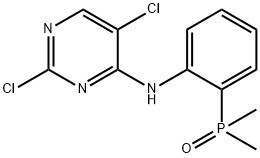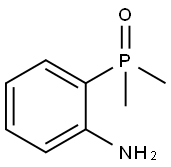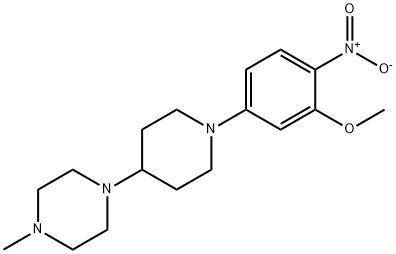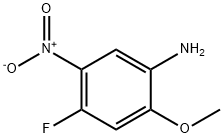(2-((2,5-Dichloropyrimidin-4-yl)amino)phenyl)dimethylphosphine oxide
- CAS NO.:1197953-49-3
- Empirical Formula: C12H12Cl2N3OP
- Molecular Weight: 316.12
- MDL number: MFCD29477700
- EINECS: 1592732-453-0
- SAFETY DATA SHEET (SDS)
- Update Date: 2024-09-02 11:41:33

What is (2-((2,5-Dichloropyrimidin-4-yl)amino)phenyl)dimethylphosphine oxide?
The Uses of (2-((2,5-Dichloropyrimidin-4-yl)amino)phenyl)dimethylphosphine oxide
(2-((2,5-Dichloropyrimidin-4-yl)amino)phenyl)dimethylphosphine oxide is an intermediate of AP26113 which is a kind of effective ALK inhibitor.
Synthesis
25 mL of a one-necked flask was added DMF (3 mL), 2,5,6-trichloro pyrimidine (0.72 g, 3.9 mmol) was added successively with stirring,2- (dimethylphosphonino) aniline (0.5 g, 3 mmol)Anhydrous potassium carbonate (0.62 g, 4.5 mmol), heated to 60 ° C and stirred for 4 h.(30 mL x 2), the organic phase was combined, washed with water (60 mL x 2), and the organic layer was dried over anhydrous sodium sulfate, and the organic layer was washed with ethyl acetate (30 mL) and water (30 mL) Filtered and concentrated, and the residue was passed through a silica gel column to give 0.8 g of a pale yellow solid (2-((2,5-Dichloropyrimidin-4-yl)amino)phenyl)dimethylphosphine oxide.
Properties of (2-((2,5-Dichloropyrimidin-4-yl)amino)phenyl)dimethylphosphine oxide
| Boiling point: | 527.5±50.0 °C(Predicted) |
| Density | 1.41±0.1 g/cm3(Predicted) |
| storage temp. | under inert gas (nitrogen or Argon) at 2-8°C |
| pka | 0.30±0.10(Predicted) |
| InChI | InChI=1S/C12H12Cl2N3OP/c1-19(2,18)10-6-4-3-5-9(10)16-11-8(13)7-15-12(14)17-11/h3-7H,1-2H3,(H,15,16,17) |
Safety information for (2-((2,5-Dichloropyrimidin-4-yl)amino)phenyl)dimethylphosphine oxide
| Signal word | Warning |
| Pictogram(s) |
 Exclamation Mark Irritant GHS07 |
| GHS Hazard Statements |
H302:Acute toxicity,oral H315:Skin corrosion/irritation H319:Serious eye damage/eye irritation H335:Specific target organ toxicity, single exposure;Respiratory tract irritation |
| Precautionary Statement Codes |
P261:Avoid breathing dust/fume/gas/mist/vapours/spray. P305+P351+P338:IF IN EYES: Rinse cautiously with water for several minutes. Remove contact lenses, if present and easy to do. Continuerinsing. |
Computed Descriptors for (2-((2,5-Dichloropyrimidin-4-yl)amino)phenyl)dimethylphosphine oxide
| InChIKey | XIKUAKVCJMVXCI-UHFFFAOYSA-N |
| SMILES | C1(Cl)=NC=C(Cl)C(NC2=CC=CC=C2P(C)(C)=O)=N1 |
New Products
Tert-butyl bis(2-chloroethyl)carbamate (S)-3-Aminobutanenitrile hydrochloride N-Boc-D-alaninol N-BOC-D/L-ALANINOL N-octanoyl benzotriazole 3,4-Dibenzyloxybenzaldehyde 4-Hydrazinobenzoic acid 1,1’-CARBONYLDIIMIDAZOLE R-2-BENZYLOXY PROPIONIC ACID 4-HYDROXY BENZYL ALCOHOL 1,1’-CARBONYLDI (1,2-4 TRIAZOLE) 3-NITRO-2-METHYL ANILINE (2-Hydroxyphenyl)acetonitrile 4-Bromopyrazole 5-BROMO-2CYANO PYRIDINE 5,6-Dimethoxyindanone 5-broMo-2-chloro-N-cyclopentylpyriMidin-4-aMine 2-(Cyanocyclohexyl)acetic acid 4-methoxy-3,5-dinitropyridine 2-aminopropyl benzoate hydrochloride 1-(4-(aminomethyl)benzyl)urea hydrochloride tert-butyl 4- (ureidomethyl)benzylcarbamate diethyl 2-(2-((tertbutoxycarbonyl)amino) ethyl)malonate Ethyl-2-chloro((4-methoxyphenyl)hydrazono)acetateRelated products of tetrahydrofuran

![[2-Methoxy-4-[4-(4-methylpiperazin-1-yl)piperidin-1-yl]phenyl]amine](https://img.chemicalbook.in/CAS/GIF/761440-75-9.gif)


![1,4-BenzenediaMine, N1-[2-(diMethylaMino)ethyl]-5-Methoxy-N1-Methyl-N4-[4-(1-Methyl-1H-indol-3-yl)-2-pyriMidinyl]-2-nitro-](https://img.chemicalbook.in/CAS/20150408/GIF/1421372-67-9.gif)
You may like
-
 1197953-49-3 AP26113 intermediates 1 98%View Details
1197953-49-3 AP26113 intermediates 1 98%View Details
1197953-49-3 -
 1197953-49-3 98%View Details
1197953-49-3 98%View Details
1197953-49-3 -
 55441-95-7 99%View Details
55441-95-7 99%View Details
55441-95-7 -
 N-Vinylformamide 99%View Details
N-Vinylformamide 99%View Details
13162-05-5 -
 Chloro Uracil 1820-81-1 99%View Details
Chloro Uracil 1820-81-1 99%View Details
1820-81-1 -
 2-ethyl-6-methyl-3-hydroxypyridine succinate 99%View Details
2-ethyl-6-methyl-3-hydroxypyridine succinate 99%View Details
127464-43-1 -
 2-ETHYLPYRIDINE 100-71-0 99%View Details
2-ETHYLPYRIDINE 100-71-0 99%View Details
100-71-0 -
 181228-33-1 (S)-Methyl 3-amino-2-((tert-butoxycarbonyl)amino)propanote Hydrochloride (DAP-OMe. HCl) 99%View Details
181228-33-1 (S)-Methyl 3-amino-2-((tert-butoxycarbonyl)amino)propanote Hydrochloride (DAP-OMe. HCl) 99%View Details
181228-33-1